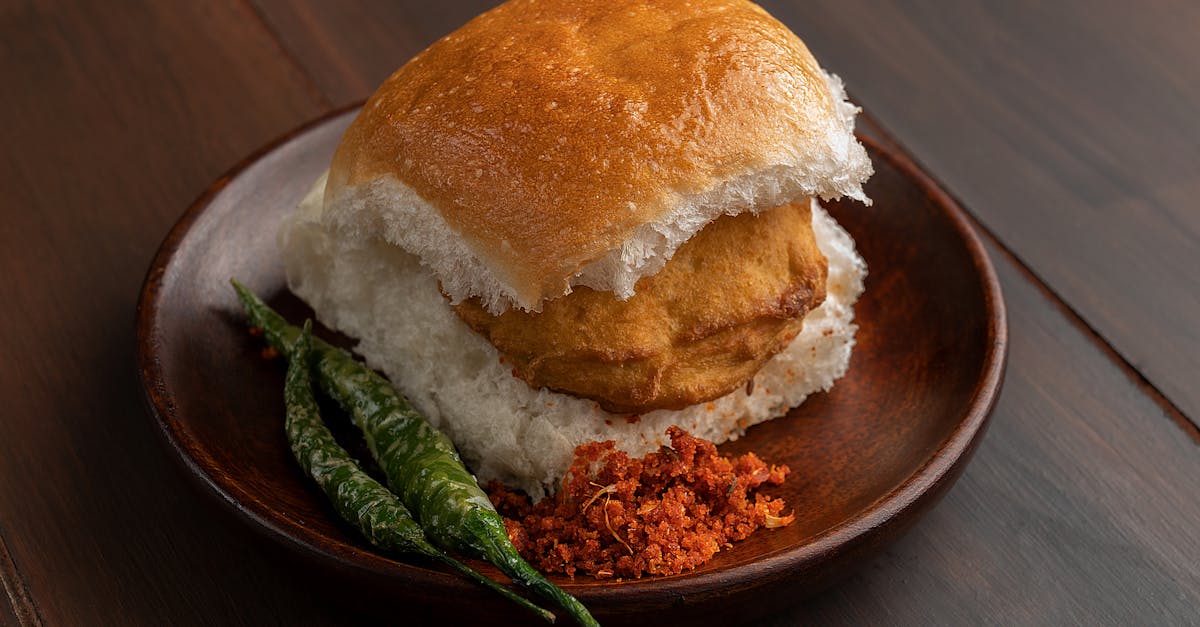Introduction: The Irresistible Allure of Mumbai’s Street Food
If you’ve ever walked the bustling streets of Mumbai, you’ve likely been enveloped by the mouthwatering aromas of chaat, pav bhaji, vada pav, and more. The city’s street food scene is an institution in itself, a culinary journey that unites locals and tourists alike. From the busy lanes of Colaba to the quieter corners of Dadar, street food in Mumbai is not just food—it’s a way of life. So, what makes Mumbai’s street food so special? And why does it keep drawing people from all over the world?
The Rich Tapestry of Flavors
Let’s take a stroll down the crowded streets of Mumbai, where every corner presents a new culinary discovery. Street food here isn’t just a quick bite; it’s an explosion of flavors, textures, and cultures all wrapped up in a simple plate or bun. Take the iconic vada pav, for example: a deep-fried potato patty stuffed inside a pav (bread roll), accompanied by spicy chutney and fried green chilies. It’s the quintessential Mumbai snack, and it’s as much about the experience as it is about the taste.
The appeal of Mumbai street food lies in its diversity. You’ll find dishes that reflect the city’s cultural melting pot—dishes influenced by Marathi, Gujarati, South Indian, and even Parsi cuisines. Every neighborhood has its signature offering. In Bandra, for example, pav bhaji stalls serve up a buttery, spicy vegetable mash, while in the lanes of Byculla, kebabs cooked over an open flame offer a smoky, irresistible flavor.
It’s All About the Spice
What sets Mumbai street food apart is the liberal use of spices. Take pani puri, for instance, a dish that needs no introduction. The crispy puris filled with tamarind water, chickpeas, potatoes, and a mix of spices can be both tangy and fiery, delivering a sensory overload in every bite. The vendors take pride in crafting the perfect balance of spice that makes every mouthful both exhilarating and addictive.
In fact, you’ll often see locals, not just tourists, lining up for a taste of their favorite street snack. And let’s be honest, there’s something special about getting your food from a small, unassuming cart with a smiling vendor who’s been serving the same dish for decades. There’s a sense of nostalgia tied to these humble food carts that adds to the charm.
The Social Aspect: Street Food as a Gathering Point
Street food in Mumbai is as much about the experience as it is about the food itself. It’s where friends meet after a long day at work, where families gather on weekends, and where strangers strike up conversations over a shared love of a delicious bite. Street food is the great equalizer—everyone, regardless of background or social status, comes together to enjoy it.
Imagine this: It’s a warm evening in South Mumbai. A group of office-goers from different walks of life sits together at a roadside stall in Colaba, eagerly sharing plates of sev puri and bhel puri. No one cares about what they do for a living; what matters is the joy of indulging in this local treat. There’s something inherently democratic about Mumbai’s street food culture. It’s casual, fun, and incredibly social.
Food as a Reflection of Mumbai’s Vibrancy
The beauty of Mumbai’s street food lies in how it mirrors the city’s dynamic spirit. Just like the city—constantly evolving, with old and new coexisting—street food in Mumbai has evolved over the years, adapting to changing tastes while still staying true to its roots. It’s the perfect fusion of tradition and innovation, with old-school favorites sitting comfortably next to newer, experimental dishes. Vendors continually push the envelope, often putting their own twist on classic dishes. For example, in some parts of the city, you’ll now find cheese pav bhaji or pav bhaji pizza, fusing Italian influences with the beloved Mumbai snack.
The Global Appeal: Mumbai Street Food Finds a Fanbase Worldwide
But it’s not just the locals who can’t get enough of Mumbai’s street food. Over the years, the city’s culinary offerings have captured the attention of food lovers around the world. With the rise of food tourism, more and more visitors to Mumbai are exploring its street food culture. A quick search on Instagram reveals thousands of food bloggers and travelers who share their street food experiences in Mumbai, giving this humble culinary tradition global visibility.
International chefs are also taking note. Celebrity chefs like Anthony Bourdain and Gordon Ramsay have praised Mumbai’s street food scene in their shows, bringing the city’s culinary gems to a worldwide audience. In fact, many high-end restaurants around the world are now experimenting with Mumbai’s street food flavors, often offering a gourmet twist on classic dishes. And who can forget the many food trucks popping up across cities like New York, London, and Singapore, offering Indian street food to an eager international audience?
The Impact of Street Food on Mumbai’s Economy
It’s not just food enthusiasts who benefit from Mumbai’s street food culture. The vendors themselves play an important role in the local economy. With minimal investment, they start their businesses and serve thousands of people every day. Street food has become a crucial part of the livelihood for many in Mumbai, from the young entrepreneurs setting up their stalls to the older generation who have been perfecting their craft for decades.
For many, these street food stalls are a source of income and a connection to the heart of the city. It’s also worth mentioning the significant impact street food has on tourism. Tourists who visit Mumbai don’t just visit the Taj Mahal Palace Hotel—they visit the local chaat stalls, the small vendors, and the legendary corners for a truly authentic experience. In this way, street food helps paint a picture of Mumbai’s true character and identity.
Conclusion: More Than Just Food
In the end, Mumbai’s street food culture is more than just a culinary tradition—it’s a vibrant part of the city’s identity. It brings people together, tells the story of Mumbai’s diverse history, and captures the spirit of a city that never sleeps. Whether you’re a local or a visitor, a plate of vada pav or sev puri can offer a taste of the city’s soul. So, the next time you’re in Mumbai, don’t just settle for a meal—immerse yourself in the experience. After all, street food in Mumbai is not just food—it’s an adventure in every bite.



